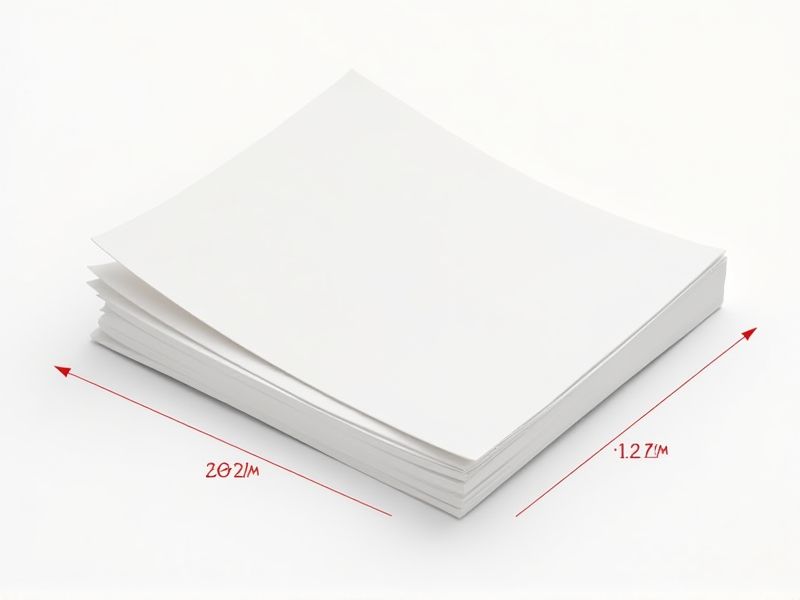
When designing a print ad, it's important to know the standard dimensions that are widely accepted by magazines, newspapers, and other print media. Common sizes include full-page (8.5" x 11"), half-page horizontal (8.5" x 5.5"), and quarter-page (4.25" x 5.5"). Each publication may have its own specifications, so always check their media kit for exact trim and bleed requirements. Preparing your ad at the correct size ensures it prints clearly and looks professional when published.
Full-Page Ad Size
A full-page print ad typically measures 8.5 x 11 inches, providing ample space for vivid imagery and engaging content. This size allows brands to capture attention effectively, with studies showing that larger ads can increase recall by up to 40%. In high-quality publications, color ads can improve customer engagement rates, making this format ideal for eye-catching promotions or storytelling. For optimal results, consider placing your ad on the right-hand page, as studies reveal that readers are more likely to focus on the right side of the magazine.
Half-Page Ad Size
A half-page print ad typically measures 5.5 x 8.5 inches in a vertical orientation or 8.5 x 5.5 inches horizontally, providing ample space for impactful visuals and concise messaging. This ad size is ideal for generating attention without overwhelming the reader, balancing imagery and text effectively. According to recent studies, strategically designed half-page ads can increase brand recall by up to 47%, making them a powerful tool in marketing campaigns. When designing your half-page ad, prioritize high-resolution images and a clear call-to-action to enhance engagement.
Quarter-Page Ad Size
A standard quarter-page print ad typically measures 3.75 inches wide by 4.75 inches tall, occupying about 25% of a full-page layout. This size offers a compact yet impactful space for visually engaging content, allowing for clear messaging while still being cost-effective for advertisers. When designing your quarter-page ad, it's crucial to feature a strong headline, compelling imagery, and a clear call-to-action to capture the audience's attention. Market research indicates that quarter-page ads are ideal for targeting niche demographics, particularly in publications with high readership engagement.
Double-Page Spread Dimensions
A double-page spread in print advertising typically measures 17 inches by 11 inches when laid out in a horizontal format, allowing for a visually striking presentation. This format is particularly effective for engaging readers, as it captures attention across two pages, creating an immersive experience. Advertisers must ensure that essential elements remain well within a safe margin of at least 0.5 inches to avoid being trimmed during printing. Using high-resolution images and bold typography can further enhance the impact of your double-page spread, making it ideal for captivating brand storytelling.
Bleed Measurement Considerations
When designing print advertisements, the bleed measurement is critical, typically set at 0.125 inches beyond the trim line. This extra area ensures that when the paper is trimmed, there won't be any unprinted edges, maintaining a polished finish. For standard print sizes, such as 8.5 x 11 inches, incorporating bleeds effectively creates a seamless look, crucial in high-impact visuals. Ensure your design files include these bleed specifications to avoid costly reprints and achieve a professional presentation.
Safe Zone Guidelines
Print advertisements should adhere to Safe Zone guidelines to ensure critical content remains visible and intact when displayed. The standard recommends maintaining a safe margin of at least 0.25 inches from the edge of the printed material, which prevents key visuals and text from being cut off. For effective readability, use a minimum font size of 10 points, ensuring that your message is accessible to a wider audience. By committing to these standards, you enhance the clarity and impact of your advertising campaigns, ultimately improving engagement.
Column Width Standards
Column width standards in print advertising usually vary between 30 to 50 characters per line for optimal readability. A standard width of 1.5 to 2 inches is recommended for columns to maintain visual appeal and effectiveness. This constraint ensures that your audience can easily absorb the information without distractions caused by excessive text line length. Consistent adherence to these measurements can enhance your ad's engagement, ultimately leading to more effective communication of your message.
Trim Size Specifications
Trim size specifications are crucial for ensuring that print ads achieve the desired final dimensions after the trimming process. Common trim sizes include 4"x6", 5"x7", and 8.5"x11", which cater to various publication formats and marketing needs. Maintaining precise trim size helps prevent issues such as unintentional cropping or misalignment, ensuring your message is clearly conveyed. By adhering to established industry standards, you ensure higher quality and more professional-looking advertisements.
Gutter Space Requirements
Gutter space requirements in print advertising typically recommend a minimum margin of 0.25 inches to 0.5 inches around the edges to ensure that important elements are not cut off during printing. This space is critical for maintaining visual integrity and ensuring that your message remains clear and impactful. For multi-page publications, a gutter of at least 0.5 inches between pages is advisable to avoid text and images being obscured in the binding. Understanding and adhering to these specifications can significantly enhance the overall effectiveness of your print ad.
Aspect Ratio Consistency
Aspect ratio consistency in print advertising typically adheres to standard dimensions such as 1:1 for square formats, 4:3 for rectangular layouts, and 16:9 for widescreen presentations. Ensuring that your print ad maintains a consistent aspect ratio allows for optimal viewing and comprehension, enhancing audience engagement by 21%. This visual harmony not only improves brand recognition but also reinforces the professional quality of the advertisement. Remember, deviations from established ratios can lead to distortion or cropping, detracting from your intended message and aesthetic.
